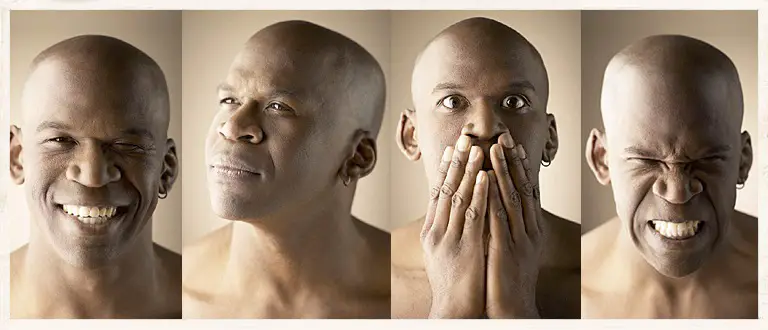Guest Writer for Wake Up World
The trouble with Paula was, she was always worrying. She worried what people thought of her; worried about what she was wearing. She worried about being too fat… being different… not knowing the right thing to say. These inner worries were etched all over her face. Now, even when she felt happy, she seemed to have a permanently worried expression.
‘I think the way I look is having an effect on how people react to me’, she said. ‘I don’t think I’m very approachable… I want to project a happier image’, Paula told me ‘but I’m not sure where to start’.
Paula was right to be concerned but there was certainly something she could do about it. At least she was aware that body language is an important part of communication.
Paula reminded me of a client I had met several years ago who also seemed to carry the weight of the world on her shoulders. When I met her at the door, I had an impression she was scowling at me. First impressions count. That client had referred to herself as ‘a fierce maggot’ and I had set her some home work of simply smiling at people and seeing what changed. She had returned the following week with the news that people had been more friendly to her. A neighbour she hadn’t spoken to before had even invited her in for coffee.
Paula and my client had both become aware of the significance of how they present themselves to the world and the impact they were having on others.
It’s Impossible Not to Communicate
‘All people smile in the same language.’ – Proverb
Body language is a large part of communication. It’s impossible not to communicate even when you are not saying one word. How you stand, or dress together with the fleeting micro-expressions of your face will convey a large amount of information… and for very good reason.
Millions of years ago, before human beings evolved the power of speech, we would have relied on grunts, grimaces, smiles and a deeply instinctive understanding of what others were trying to communicate.
We are hard wired to have opinions and judge others within seconds of encountering them. Is this person friend or foe, of my tribe or another tribe? Am I in danger or not in danger?
Understanding body language is essential in order to improve nonverbal communication.
In conversation, being able to present and read nonverbal communication is really helpful.
The mnemonic SOLER is a reminder which contains five tips for making a really great start with positive communication and good listening.
Sit Square
It’s a really good idea to face the person you’re going to be talking with. If you sit side-by-side or find you are looking at the back of somebody’s head, it will be impossible to communicate fully as we read faces and all the micro expressions and nuances they convey.
Open Posture
Crossed arms or legs close the body down and give a nonverbal message of disinterest. When we close ourselves off in this way, we are saying ‘I am hiding something’ or ‘I do not really want to be here in this conversation with you.’ If you see this body language in others, it conveys a clear message which you will understand on a subconscious level.
 Lean In
Lean In
If you go to a restaurant and look around the tables, you can tell me couples who are tuned into each other as they are leaning in, mirroring body language.
If somebody is leaning back on the chair, the nonverbal message again, is one of disengagement or disinterest.
If the verbal messages are at odds with the non verbal messages, this is referred to as ‘in-congruence’ and will create tension in the communication, sometimes a problem with couples as, generally, women are better at picking up these non verbal clues than men.
Eye Contact
When people are speaking they tend to look around the room and occasionally glance back at the person they’re talking to. If that person is looking away, it would appear as though they are not interested in the words of the speaker.
Somebody who is listening and attending will be looking directly at the person talking. They will nod or give minimal cues such as ‘uhu’ or ‘yes’ to show active listening.
Relax
If you look relaxed, the person you’re talking with is likely to feel relaxed too. Empathic mirror neuron circuitry means we reflect the body language of others when we are tuned in.
Smile and The World Smiles Back
‘Sometimes your joy is the source of your smile, but sometimes your smile can be the source of your joy.‘”• Thich Nhat Hanh
But the biggest and best difference you can make to your approachability and attractiveness to others is, by far, contained in the power of the smile….but it has to be genuine!
Most people pick up on a smile which is fake as it involves the muscles around the mouth but not the eyes. Gordan Brown was a classic example of someone who had been instructed to smile more. Consequently, he often looked like some one had pressed an invisible button operating the corners of his mouth. The smile was switched on and switched off in such an unnatural way, it convinced few and created just the kind of incongruence which leaves people feeling a bit confused and uncomfortable.
It was Guillaume Duchenne who, back in 1862, identified the muscle groups involved in a real heart-felt smile, subsequently known as the ‘Duchenne smile.’
Fake It ’Til You Make It
‘Remember even though the outside world might be raining, if you keep on smiling the sun will soon show its face and smile back at you.’ – Anna Lee
Yet, awkwardness apart, there are real benefits in practicing the simple art of smiling as, according to research, we smile when we are happy, but the act of smiling can also make us feel happier too.
It was in the 1970s that smile research really got off the ground. There were very consistent results from experiments which had people making happy or unhappy facial expressions and then measuring their mood afterwards. (3)
So, on balance, if you want to make a good impression, be attractive and approachable, head up the promotion ladder at work, or simply feel happier and more confident, pay attention to your non verbal communication skills, but, more importantly… smile!
How Your Body Language Can Improve Your Life
Video link: Video – How Your Body Language Can Improve Your Life
Previous articles by Frances:
- How to Be Happy Alone – 6 Tips to Use Today
- The Ingredients in the Recipe for Happiness
- Having Suicidal Thoughts? This Article Could Save Your Life
About the author:
 Frances Masters is a BACP accredited psychotherapist with over 30,000 client hours of experience.
Frances Masters is a BACP accredited psychotherapist with over 30,000 client hours of experience.
In 2009 she co-founded the charity Reclaim Life and trained volunteer coaches in a unique model which integrated for the first time powerful psychotherapeutic skills with holistic life coaching tools that assist people to reformat their lives for success. The extended training program is accredited by the National College of Further Education.
At The Fusion Model, Frances writes about how to live your best life, by combining mental, bodily and spiritual wellness.
You can follow her work at TheFusionModel.com, Twitter.com/fusioncoachuk or Facebook.com/TheFusionModel
Main image credit: reading-body-language.co.uk

If you've ever found value in our articles, we'd greatly appreciate your support by purchasing Mindful Meditation Techniques for Kids - A Practical Guide for Adults to Empower Kids with the Gift of Inner Peace and Resilience for Life.
In the spirit of mindfulness, we encourage you to choose the paperback version. Delve into its pages away from screen glare and notifications, allowing yourself to fully immerse in the transformative practices within. The physical book enriches the learning process and serves as a tangible commitment to mindfulness, easily shared among family and friends.
Over the past few years, Wake Up World has faced significant online censorship, impacting our financial ability to stay online. Instead of soliciting donations, we're exploring win-win solutions with our readers to remain financially viable. Moving into book publishing, we hope to secure ongoing funds to continue our mission. With over 8,500 articles published in the past 13 years, we are committed to keeping our content free and accessible to everyone, without resorting to a paywall.







